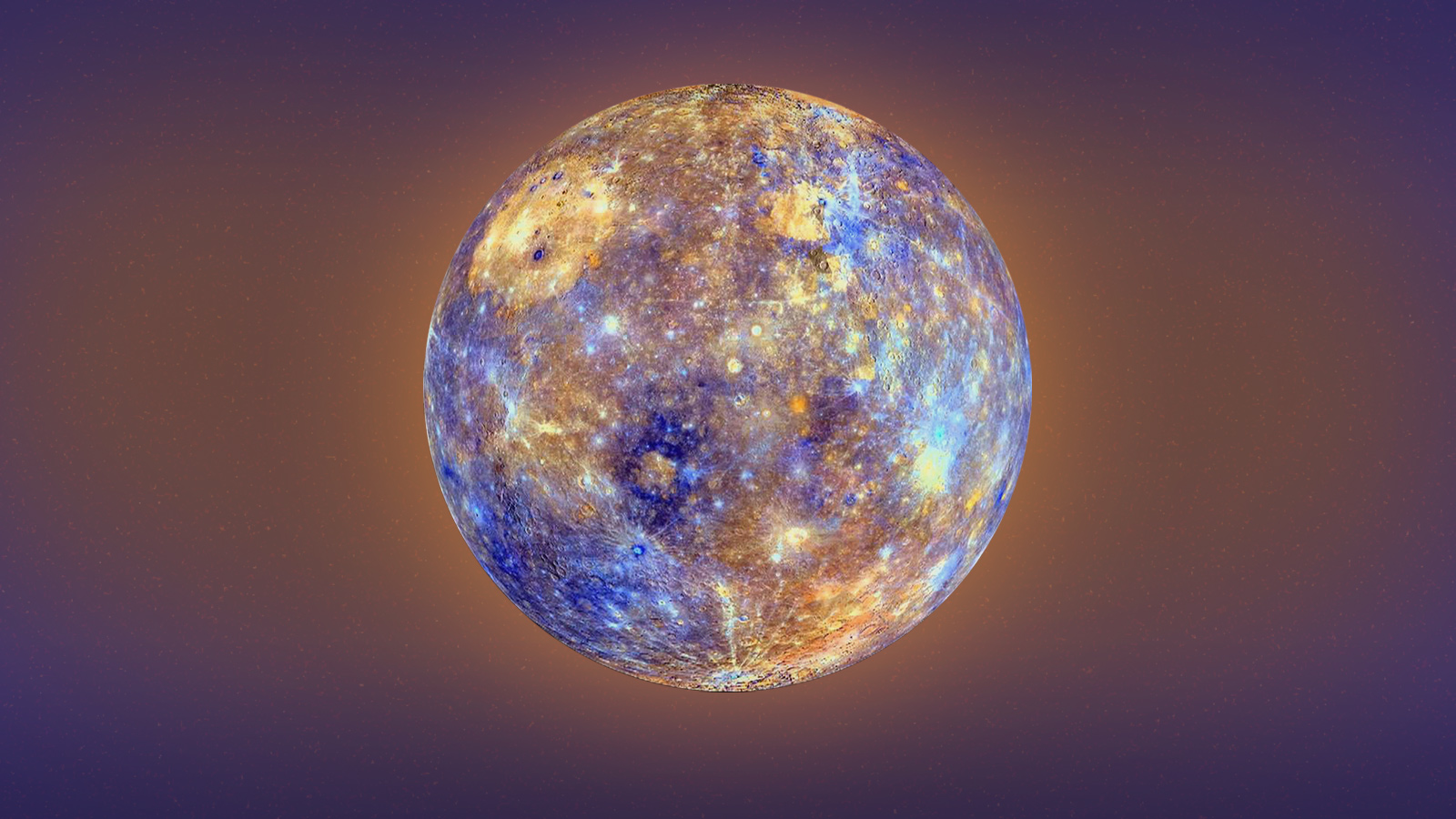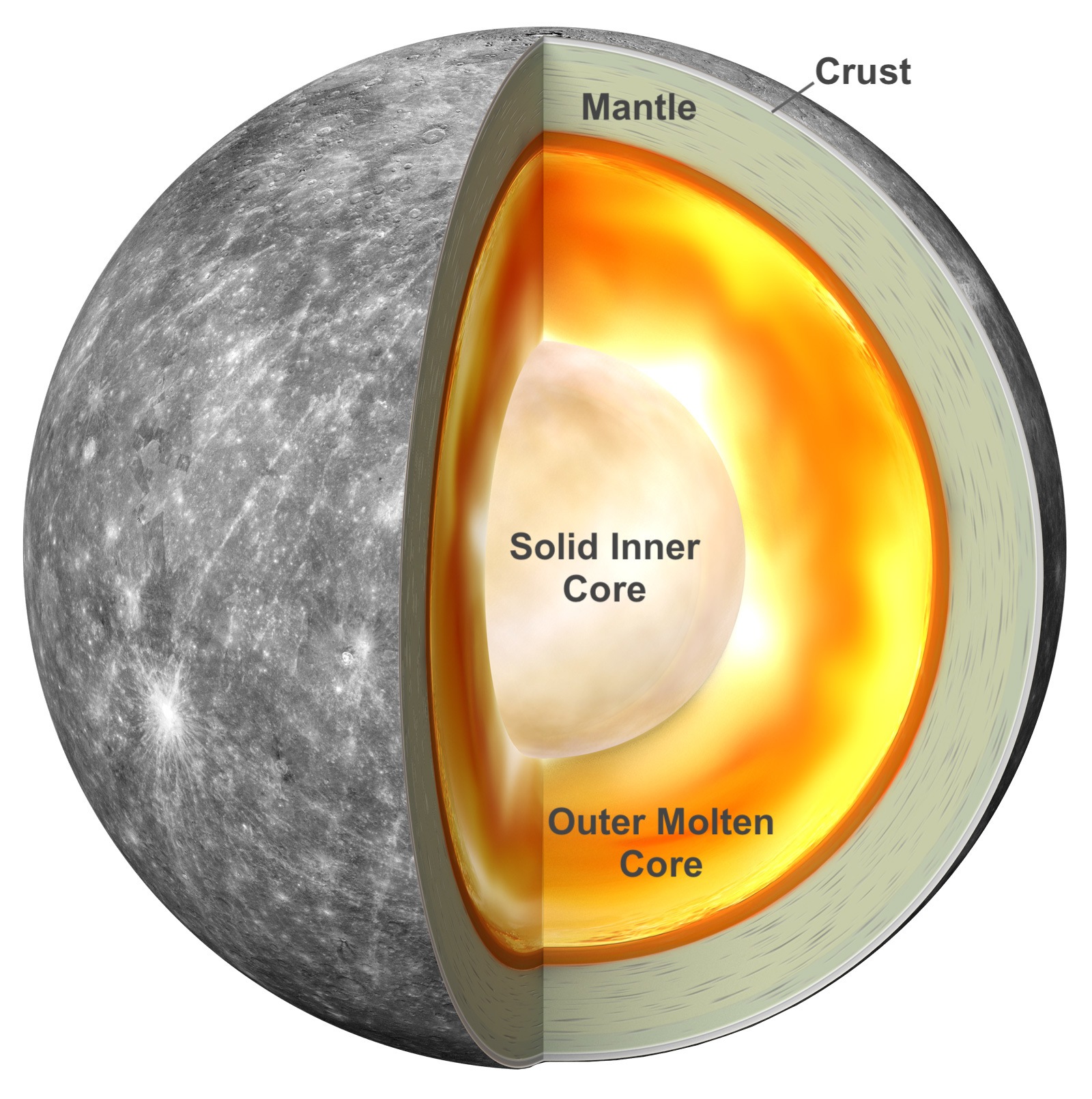Mercury was the second smallest planet and the closest planet to the sun in the solar
system. The oldest name of mercury in roman was fleet-footed messenger of the
gods because it was move faster to any other planet. Its diameter was 40%
smaller than the earth and 40% larger than
the moon. Its mass weight was 3.303 e+23 or its equatorial radius distance is
2,439.7 km and its density was 5.42 gm. Its rolling dust was covered the hills
from the constant bombardment of meteorites. The height of fault-cliffs rises
for several kilometres and mostly extends for hundreds of kilometres. Some
explorer would notice that the sun appears two and half time larger than on
earth whatever the sky is always black because it has not a virtually
atmosphere to cause scattering of light. At maximum elongation of only 28 degrees
from the sun is seen from the earth because it can only be viewed during the daylight
or just before sunrise or after sunset.

History
Mercury is believed to be discovered by Galileo Galilei and Thomas Harriot in 1631. Since thousands of years ago it has been worshiped as a God
in roman mythology as the son of Jupiter and the daughter of titan atlas Maia.
It was also known as the god of traders and merchants in Greek mythology. The
earliest observations of mercury are mulapin tablets and this observation is
made by an Assyrian astronomer around the 14 century BC. The Babylonians was
the messenger of god in their mythology. The ancient name of mercury was depending
upon the weather and it’s known that evening star or morning star in 350 BC.
The roman feed up a new name after the messenger in their mythology. Mercury is
quoted with the Greek Hermes because it moves across the sky. The Greco-Egyptian
astronomer was writing about the possibility of planetary transits across the
sun in the planetary hypotheses. In olden times mercury was the hour star in
china and the direction associated with north and they have five phases systems
were known as metaphysics. Some literally plant like modern Chinese, Korean,
Japanese and Vietnamese are referring to the water star based on 5 elements.
The ancient name of mercury in Hindu mythology was Buddha and it presides over
Wednesday. The Islamic astronomer in 11th CE described the deference between
geocentric orbit as being oval and this insight didn’t influence his
astronomical theory.

Composition
Mercury is a
terrestrial and smaller planet in our solar system. Its diameter is 4,879km and
magnitude is -1.9 to the equator and its composition is approximately divided
into two parts are 70% metals and 30% silicate material. It has a high ratio of
magnesium to silicon and low ratio of aluminum and calcium to silicon of the
crust rich in feldspar of the moon. It has slightly dense than the earth at
5.43g/cm3. But mercury has
smaller than the earth. Its gravity is 2.78m and its velocity is 4.25 km. The
rotational period of mercury is 58.6462 and its orbital period is 87.969.
Astronauts found a low surface abundance of titanium and iron. The mean
temperature is 179°C; its minimum temperature of mercury is -173°C and the maximum temperature is
427°C. The atmospheric composition of helium is 42%, sodium is 42%, oxygen is
15% and other is 1%.The intense solar radiation has expected optical properties
of the minerals. The crust of mercury is made up of a silicate rocks and it has
a small ice caps at south and north poles and it will stays frozen inside deep
craters that are shaded from sunlight. The mantle is beneath the crust that is
hundreds of kilometers thick. The center of mercury is a partly molten iron
core about 2300 miles in diameter are called core.

Relation with Solar System
The distance between mercury to sun is
47.106 million km and the radius of sun is 696,340 km. But the distance between
earths to sun is 1 astronomical unit and the sun occupies 0.00001%of volume.
But the earth volume is roughly one millionth of the sun. The Jupiter planet is
5.2 astronomical unit from the sun. The most distance planet is Neptune which
has a 30 astronomical unit from the sun. The distance from venues is
approximately 0.33 AU farther out from sun than mercury whereas Saturn is 4.3
AU out from the Jupiter and Neptune lies 10.5 AU out from Uranus. The largest
scale model like Sweden solar system uses the 110 meter in Stockholm as its
substitute sun and the scale Jupiter is a 7.5 meter sphere at Stockholm Armanda
airport 40 km away from sedan is a 10 cm sphere in 912 km away. The distance
between mercury to venues is 0.34 AU and distance between mercury to mars is
1.14 AU.

Some amazing facts
2.The most amazing fact about Mercury is the presence of magnetic field around it.





0 Comments